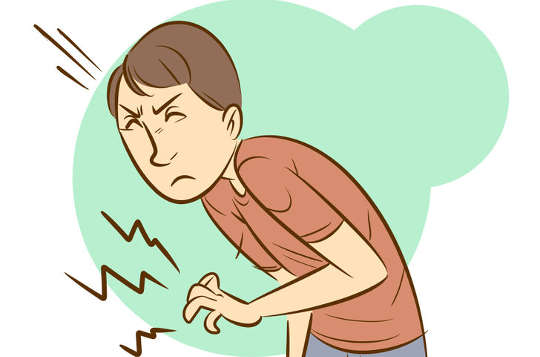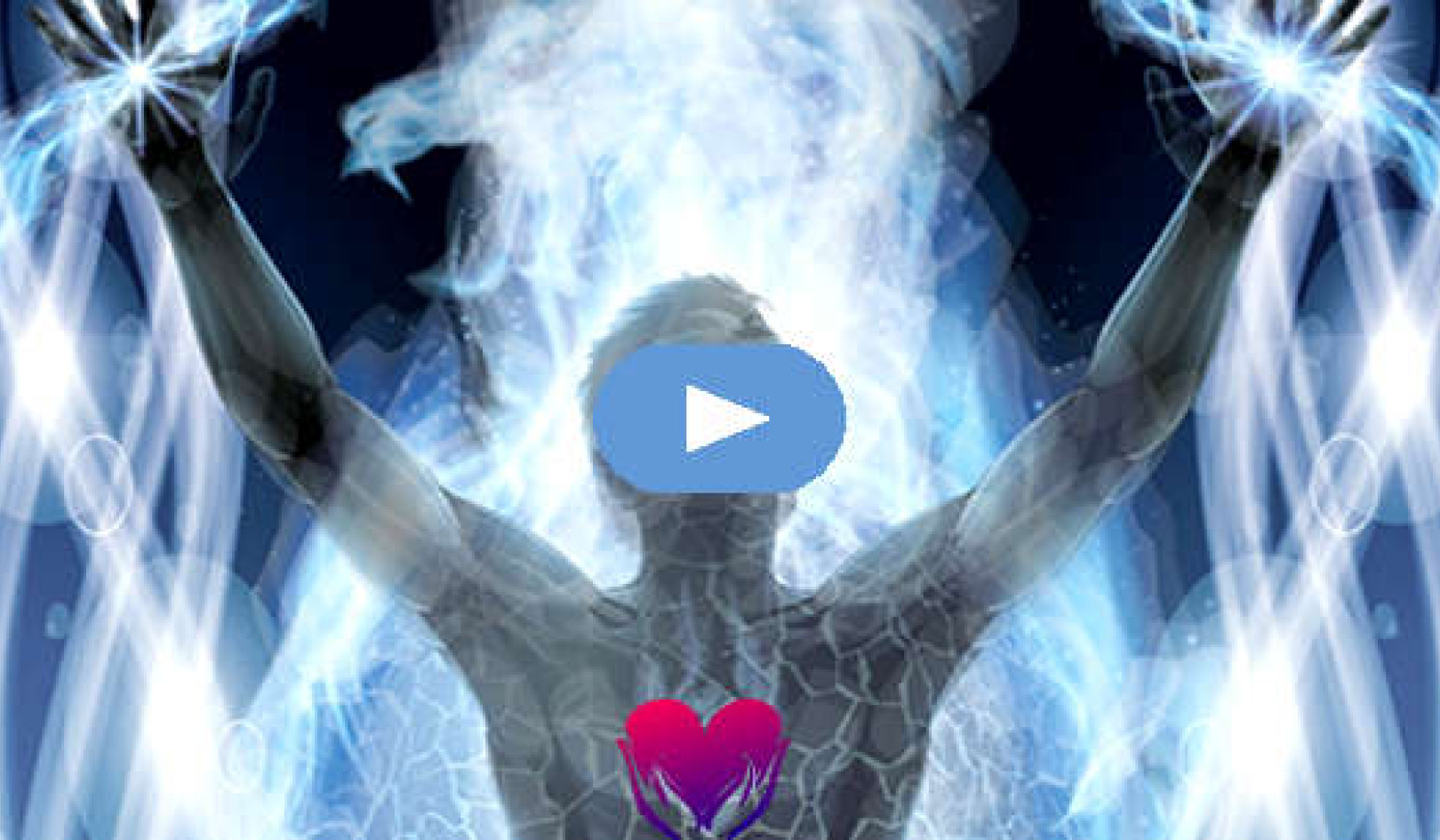
Image: WikiHow.com
Being nervous is part of being human. Most people experience varying degrees of nervousness during the course of their lives. It’s part of the human condition for most of us. And recognizing this is a good way of taking care of yourself and living sanely.
Sometimes this nervousness may become more intense and then we call it anxiety. Many people experience varying degrees of anxiety – and again this is a very normal, human experience. Unfortunately, anxiety is a big taboo in our society and many people suffer in silence from this perfectly human predicament.
If this is the case with you – if you sometimes experience anxiety that gets very intense – you may not be getting the help you deserve because you are ashamed of feeling anxious or having panic attacks. This is unfortunate because understanding what anxiety is and what triggers it can be a great help in demystifying and dealing sanely and appropriately with it. So that’s what I’d like to do here – I’d like to try to demystify anxiety and offer some sane ways to deal with it.
Let’s start by looking at what anxiety is…
The human body is designed – like all animals – to react quickly to danger. When faced with a physical threat or danger, we (like animals) automatically go into the “fight or flight” response. In other words, if a tiger is after you or you’re about to get hit by a bus, your body will react automatically to the perceived threat by secreting adrenaline and cortisone which immediately alter the bodily functions to prepare you to either “fight”/defend yourself or “flight”/ run away to escape the danger. Immediately the heart beats faster and the body contracts and many ordinary functions (like digestion) get put on standby because they are not necessary in the present danger situation.
This is a perfectly normal physical reaction to danger and it’s something we all experience automatically when threatened. It’s important to understand that this is a physical mechanism that is part of the way our bodies function. It happens to everyone when faced with danger and it’s perfectly normal. It’s not something we can control or stop – it happens automatically. It’s the way we are built.
There is however a difference between us humans and animals – and that is – we humans are “thinking” creatures. That means we (unlike animals) can imagine (think of) the future. And that means we can imagine, visualize, and conceive of possible danger or a threat in the future that has not yet arisen. And this is very important to understand. We can imagine things that haven’t happened yet – and we can also imagine things that never happen (something we often do, especially if we worry a lot and suffer from anxiety!) And this is where the problem of anxiety arises.
When we are anxious and suffer from anxiety and/or panic attacks – we believe in an imminent threat (whether or not this is the reality). And as a result of this thought/belief in an imminent threat – we unwittingly trigger the “fight or flight” response in our own bodies. When this happens, our bodies automatically go into high alert (because this is how our bodies are designed to react to danger) whether we are at a party, sitting in a business meeting, or just buying milk at the supermarket. And then because of this high alert mechanism, we experience all the bodily changes that are triggered by the “fight or flight” response.
But since there is no clear and present danger – since there is no tiger about to attack you in the supermarket – you have what we call an anxiety attack or a panic attack, which is really just experiencing all the physical symptoms of the “fight or flight” mechanism without having a real physical threat to deal with. But it happens anyway because your brain had a fear thought which triggered this response in your body. Once you had the thought, it happened automatically. So then what happens?
What happens is your heart beats rapidly, your pulse increases, you go weak in the knees, your hands shake, your perceptions change, you feel a sense of unreality, you feel dizzy/shaky, you feel butterflies in your stomach or might even feel nauseous… You experience the whole host of physical symptoms that are triggered by the “fight or flight” mechanism. But since there’s no tiger after you, you just sit there at the meeting or stand there in the supermarket and can’t use this energy as it was meant to be used by fighting or running – and so you end up wondering what all these strange physical symptoms are about. Because all you’re doing is buying milk in the supermarket.
And then comes the next unsettling bit, you get scared of what’s happening to you. You get scared of your body and its reaction and you wonder – what’s wrong with me? Why am I feeling so strange? Why am I sweating like this? Why is my heart racing? Why do I feel dizzy? Am I having a heart attack? Is there something wrong with me? What’s going on?
And now you’re afraid of your initial response (what your body is doing) to this perceived danger, which in this case was only a thought in your mind. So yes, now you may be having a full-blown panic attack.
So let’s just stop a minute and examine this sequence of events very slowly because this is extremely important when it comes to learning to deal with anxiety and panic attacks.
The Two Parts of a Panic Attack
The full-blown anxiety or panic attack has two distinct parts (although it happens so quickly most people don’t realize this). There is the first part of the panic attack – and that’s when something (either a thought about an event or a thought) triggers the initial fear and the “fight or flight” response. This trigger could be a certain situation (like real danger or just going to a meeting or a party or having to stand up and speak in front of a group of people) – there are many possibilities. (It could even be the thought that you might have a panic attack in a certain situation.) And then there’s the second part of the anxiety/panic attack – which is when you become afraid of your own initial response and what your body is doing.
We can call these two parts of your response – first fear and second fear. So first fear is the initial trigger and second fear is when you are afraid of your own response. In other words the second part is – fear of fear.
And now this is very important to understand: When you become afraid of your initial response and what your body is doing – in other words when you feel fear of fear – you are prolonging the “fight and flight” reaction in your body because by being afraid of your initial response, you trigger your body to continue secreting adrenaline and as a result, the high alert condition continues.
People who suffer from anxiety and feel desperate about their condition have usually been triggering this mechanism in their bodies so consistently over such a long period of time that they are now in what I call “a constant state of high arousal”. And unfortunately, once you’re in a constant state of high arousal, it takes very little to trigger the “fight or flight” response in your body because your system is now so over-sensitized. In fact just the slightest thing can set it off – the slightest thought.
Just the thought, for example, of some future event or just the thought of meeting people or of going to the supermarket… and then you’re really caught in the grip of anxiety because since you don’t understand what’s going on you continue to keep triggering this mechanism in your own body. It’s fear upon fear upon fear, and all because you are afraid of the “fight or flight” mechanism, which is a perfectly natural, normal, automatic physical response that all creatures have.
But here’s the good news – when you understand this – you can find your way out of this intensely challenging and difficult conundrum! For some people, just understanding what is going on is enough to cure them!
So what can we do about all this? I suggest a two-pronged approach to the challenge comprising what I call “first aid” and “reality testing”.
First aid
The first approach is what I call “first aid” because it can be used to deal with the immediate anxiety and/or panic attacks. This technique helps you manage the second fear or the fear of fear itself.
Reality testing
The second approach is what I call “reality testing” because this involves the long-term process of identifying and questioning the “catastrophic thinking” that is triggering the original “fight or flight” mechanism to begin with. This approach deals with first fear – or the mind set and underlying beliefs that trigger fear in you in the first place.
(Before we look at these two approaches, let me make it clear that if you are in any way are worried about your physical health – for example your heart – it is very important that you go to the doctor and get a thorough physical check-up first. The physical symptoms triggered by the “fight or flight” mechanism can mimic the physical symptoms of real physical ailments, so before you begin using the techniques described here, it’s important that you get checked by your doctor first and are told you are in good health and that “there’s nothing physically wrong with you”!)
First aid
When you’re feeling anxiety or having a panic attack, I suggest using Claire Weekes’ formula for dealing with nervous illness. Her formula has 4 steps:
- Facing
- Accepting
- Floating
- Letting time pass
Let’s look at her four steps.
Facing
Facing means understanding what is happening (see the above description of the “fight or flight” mechanism) and knowing that by trying to suppress your symptoms or run away from them and the situations you believe trigger them, you are only making things worse. So facing means standing there, understanding what’s going on, and not resisting what is happening. Facing means understanding that you have been bluffed by physical symptoms which have no medical significance. Facing means understanding that what you are experiencing is unpleasant – but not dangerous. Facing means understanding that basically all your symptoms mean nothing!
Accepting
Accepting means acceptance – and this is the key to dealing with anxiety and panic attacks when they arise – and getting over them. Accepting means just letting it happen. Not resisting. Knowing what is going on, knowing that what your body is doing is perfectly normal and natural and allowing your body to do what it does. When you accept what is going on, you do not add second fear to the original first fear. And when you do not add second fear to the symptoms you are experiencing, they will lessen and then finally stop.
When you accept, you just watch your heart race and your knees knock and you’re not afraid of this happening. You know it’s not dangerous. You know it’s a perfectly normal physical mechanism that has been triggered in you because of some fear thought. So you just accept what’s going on. And you realize that resisting (which is second fear) will only make it worse, will only make your symptoms continue, will only make you even more sensitive and hyper-aroused. This is the heart of the cure. Acceptance. True acceptance. Just letting it all happen.
Floating
Floating is the physical out-picturing or manifestation of acceptance. Floating means allowing your body to relax with your mind, it means letting go of all tension because when you start to become aware of what you’re doing when you have a panic attack, you will see that you are tensing up. You are tensing up because you are fighting the sensations you are having.
Floating is the opposite of fighting and resisting. Floating is just letting go. Floating means no physical resistance. It’s like you are lying on your back in a lovely swimming pool and just floating in the warm sunshine. You’re completely relaxed physically, doing nothing. So this is a way of allowing your body to calm down. Just let all your muscles relax and go limp. First you accept in your mind and then you allow your body to float and release all tension.
Letting time pass
The last step is letting time pass. This is so important because recovering from anxiety and the nervous tension it generates in the body takes time. So even if you now understand what is happening to you and accept and float and don’t resist anything, you will probably still go on feeling anxious and panicky for a while – simply because your system is so worked up.
When you have been in a state of high arousal for a long time (which most people who are suffering from anxiety and panic attacks are), it takes a while for the system to calm down again. So this means you will have to keep practicing facing, accepting and floating for a while before your arousal level starts to go down. So it’s important not to be impatient. If you’re impatient and want immediate results, it really means you are resisting and not accepting all your symptoms as normal and natural. Because if you did, if you accepted that all your symptoms were normal and nature, why would you be so impatient?
So again, when panic strikes – practice these 4 steps.
- Facing
- Accepting
- Floating
- Letting time pass
They work wonders if given a fair chance. For more about Claire Weekes’ technique, see any of her many books such as “Essential Help for Your Nerves” or “Peace from Nervous Suffering”.
Reality testing
Using the Claire Weekes technique above to deal with anxiety and panic attacks when they occur is very effective, and for many, it may be enough to cure their anxiety attacks.
But if it isn’t, it makes sense to embark on what I call Reality testing. And by this I mean embarking on the process of identifying and investigating the underlying thoughts and beliefs that are making you afraid to begin with. Why can this be so important? Because it is your thinking that is the cause of your emotions (fears) and not the events themselves. In other words, thinking is the cause and your emotions (fear and anxiety) are the effect of your beliefs and interpretation of situations.
If you have difficulty doing this type of reality testing on your own, you may need professional help to uncover and identify the basic beliefs and stories that are bothering you. If this is the case, going to a trained facilitator or therapist can be a great help.
Whether you are working on your own or with a therapist, the basic exercise is to compare reality with your thinking. And ask yourself: Is the reality you are facing half as bad/dangerous/uncertain as you believe it to be? How much of what you are thinking and saying to yourself is “catastrophic” thinking which has nothing to do with reality? What’s really going on here?
© Barbara Berger. Reprinted with permission.
Article edited and expanded May 23rd, 2017
Book by this author:
Are You Happy Now? 10 Ways to Live a Happy Life
by Barbara Berger.
 What is preventing you from being happy now? Is it your partner, your health, your job, your financial situation or your weight? Or is it all the things you think you “should” do? Barbara Berger takes a look at all the things we think and do that prevent us from living happy lives now.
What is preventing you from being happy now? Is it your partner, your health, your job, your financial situation or your weight? Or is it all the things you think you “should” do? Barbara Berger takes a look at all the things we think and do that prevent us from living happy lives now.
Click for more info or to order this book on Amazon.
About the Author

Barbara Berger has written over 15 self-empowerment books, including her international bestsellers "The Road to Power / Fast Food for the Soul" (published in 30 languages) and "Are You Happy Now? 10 Ways to Live a Happy Life" (published in 21 languages). She is also the author of “The Awakening Human Being – A Guide to the Power of Mind” and “Find and Follow Your Inner Compass”. Barbara's latest books are “Healthy Models for Relationships – The Basic Principles Behind Good Relationships” and her autobiography “My Road to Power – Sex, Trauma & Higher Consciousness”..
American-born, Barbara now lives and works in Copenhagen, Denmark. In addition to her books, she offers private sessions to individuals who wish to work intensely with her (in her office in Copenhagen or on Zoom, Skype and telephone for people who live far away from Copenhagen).
For more about Barbara Berger, see her website: www.beamteam.com


























